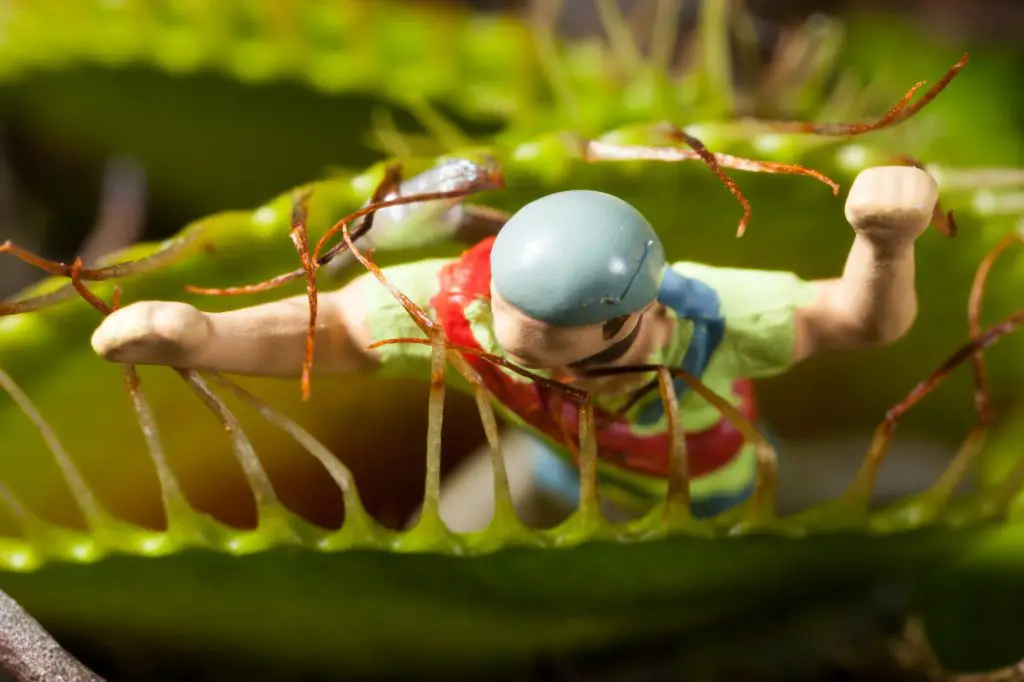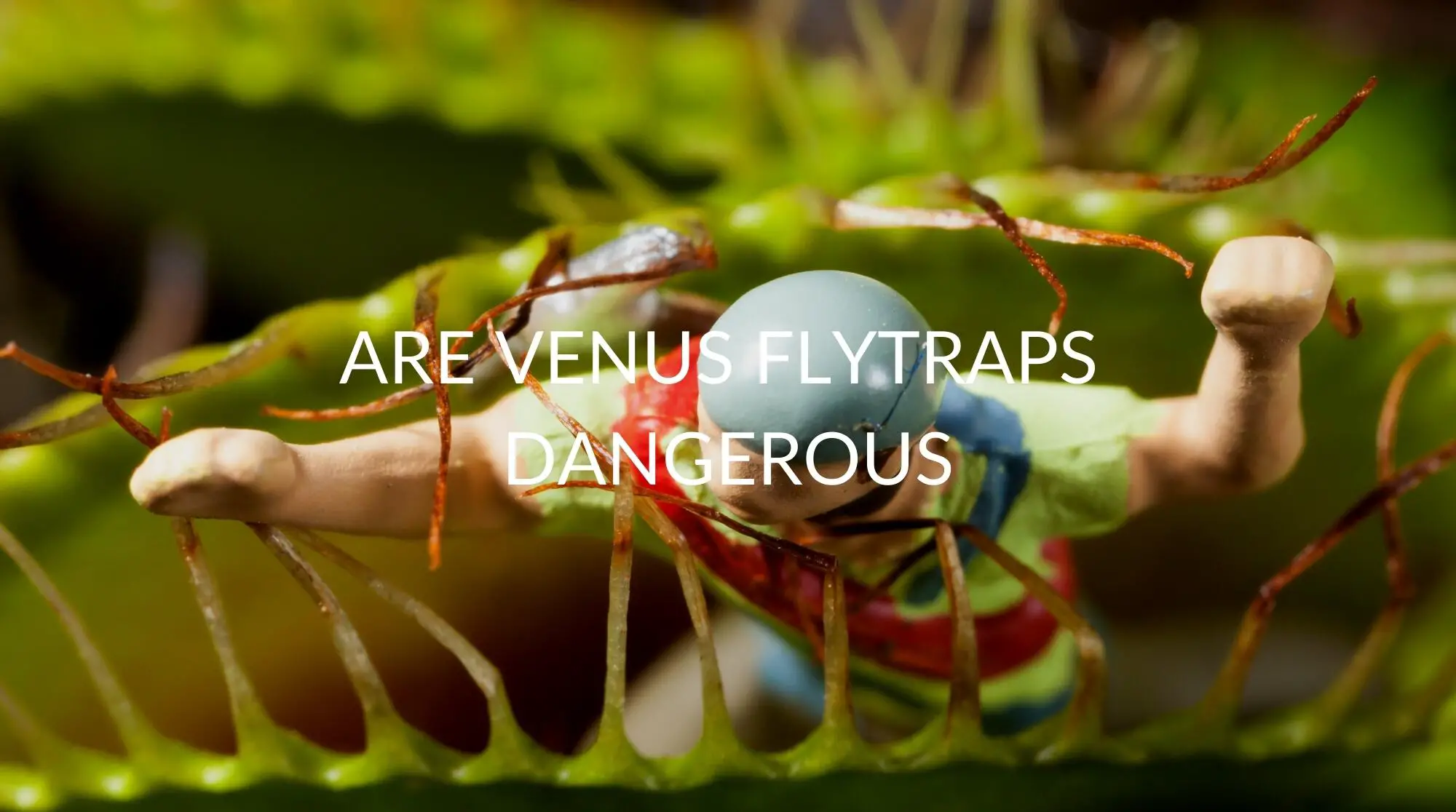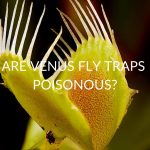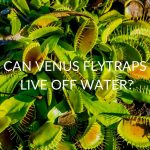Among the numerous plant types that nature has blessed us with, one, in particular, enchants observers. It’s not the blooming green and dazzling orange exterior that catches the eye but the ability to trap nearby objects that make this plant stand out. The Venus Fly Trap, with its unique defense mechanism, is viewed as both a beauty and a mystery. Find out all you need to know about it and more in the following article!
Are Venus Fly Traps Dangerous?
The answer to this question is very subjective. For insects or small animals such as grasshoppers, spiders, flies, and ants, the plant can lead to a slow and painful death by digesting their bodies whole. However, for a human being, the plant poses little to no danger. This is because insects that prowl in the trap zone activate the plant’s defense system very easily. The recurrent exposure and continuous contact of crawling insects lead to the plant being activated, closing the exposed leaves into one giant trap.
Insects are attracted to nectar produced by the plant. The trap’s activation is due to the sensitive hairs being brushed against the insect’s surface repeatedly. A single touch does not cause a snap. Instead, the multiple disturbance makes the plant’s defense mechanism aware of the impending prey. Once the signals are distributed across the lobes’ surface, the two open halves close up with the insect inside it, ready for digestion.
Venus Fly Traps only pose a danger to a particular set of organisms because these provide the plant nourishment it fails to attain from the soil it grows in. Once the desired insect is successfully attracted to the plant and reaches its surface, the lobes sense this and snap shut with a movement called thigmonasty. The edges of these lobes have minuscule spikes that interlock with each other, preventing the trapped insect from escaping.
Is Venus Flytrap Dangerous to Humans?
Even though these traps can easily digest human skin, they can’t be considered a danger to humans. The main reason for this is that the trap’s surface area is approximately 1.5 inches. In terms of ingesting the plant or a portion of it, the maximum damage it can cause is indigestion in humans. This further clarifies that Venus flytraps are not poisonous and certainly not harmful for humans.
If the plant traps your finger, there will be little to no harm done to your skin inside the trap, even if you don’t remove it for days or even weeks on end! One reason for this is your hand will not wholly allow the trap to close, and secondly, the secretions from the plant cater to breaking down bodies of small insects.
You have more potential to harm the plant than the other way around. For a Venus flytrap, the process of closing its lobes and digesting its prey is a high-energy process. If you unnecessarily put the plant through the process of spending energy in trapping your finger that you can easily remove, the lobe will die quickly as it will be wasting energy while gaining zero nutrients. For the plant’s health and survival, it’s best to let it trap insects unbothered.

What Happens If a Venus Flytrap Bites You?
Contrary to popular belief, a Venus flytrap cannot exactly bite a person. However, they have a knack for meat, owing to their carnivorous nature. When meaty prey comes into their trap, even if it’s a human finger, several internal processes are activated to help digest that meat. This digestion process consists of mechanical triggering followed by electrical signaling and, ultimately, chemical digestion.
Firstly, the hormone jasmonate is secreted, leading to the activation of digestive glands. The overall process of breaking down the insect is done by Hydrochloric acid. During this breakdown, the softer parts of the insect are dissolved, and any bacteria or fungi present on the prey are killed while its nutrients are absorbed. The lobes stay closed for about 5 to 12 days, depending on the size and complexity of the insect. Once no more digestion and absorption is possible, the lobes reopen to discard the exoskeleton, the indigestible portion of the insect’s body, ready to catch its next prey.
For any leaf of this plant, meals range between 2 to 5, which means after 5 prey are caught and digested, the leaf loses its ability to snap and trap. Once this happens, the leaf has only a short amount of life that remains. During this time, it makes energy from photosynthesis; however, it soon dies altogether and detaches from the plant.
Is It Safe to Touch a Venus Fly Trap?
For kids and adults, touching a Venus flytrap will cause no harm. Trapping your finger in the plant will mildly put pressure on it but not be the cause of any damage. However, touching and causing the trap to shut with your finger will make the lobes inaccessible for photosynthesis. This means the regular ways the plant gets energy will be blocked for some time.
In this context, it is important to safeguard these plants because of their increasing scarcity and possible endangerment in some parts of the world. Apart from the fact that these plants are considered a source of amusement by many, leading to them quickly losing leaves, they also have to compete with different plants for sunlight and nutrients. Work needs to be done to ensure the human touch does not lead to the plant being permanently unavailable in the distant future.
Are Venus Flytraps a Danger To My Pets?
Due to their size and specified target, Venus Flytraps don’t cause any physical damage to pets, especially cats and dogs. Nonetheless, the plant has toxins that can cause discomfort to pets whenever consumed, including upset gastrointestinal processes. Venus flytraps are becoming more and more popular as indoor plants. However, it is important to keep pets away from the plant due to their delicate nature and limited leaf lifespan.
Venus flytraps make excellent house plants, provided they have sufficient water and sunlight. These plants might seem rigid and hardcore, but in reality, they require high maintenance and specified care. It is ideal for placing the flytrap on a patio window where enough daylight will enter, and bugs can slink through. These plants require high amounts of heat and sunlight during the summers and an interval for rest during the winter season.
The plant’s leaves are seen as active and alive during the summers. They can be kept this way using artificial lighting as well as natural daylight. The winter season is for latency; therefore, the plant appears dead with its withered leaves. It’s important to maintain a temperature between 40-50 Fahrenheit (4-10 °C) during this time. During this period, it’s important to feed the plant active, living insects as a source of energy.
Recap
Described by Charles Darwin as one of the “wonders of the world,” the Venus Flytrap possesses beauty like no other. Their inability to cause harm to humans and pets alike makes them the perfect link to nature inside one’s home. If you have one in your house or plan to buy one any time soon, keep in mind the very delicate nature of these plants, and raise them with the utmost care and attention, so they get to adorn your dwelling for many years to come.







